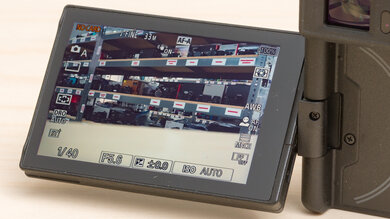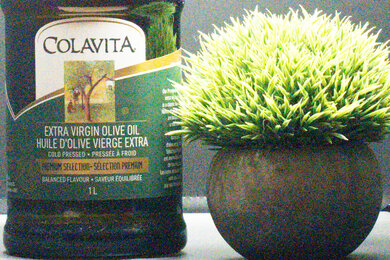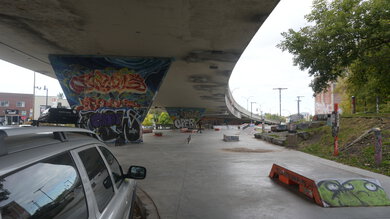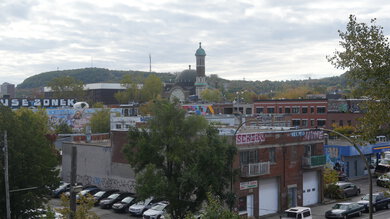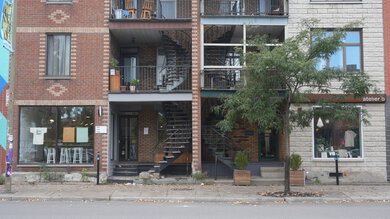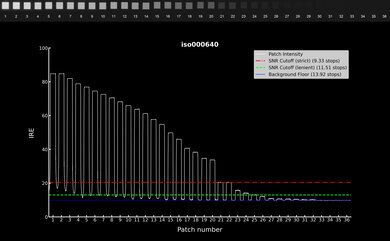The Sony α7C II is a compact full-frame camera that's well-suited to both photo and video work. With a new 33 MP sensor, borrowed from 2021's Sony α7 IV, along with a new AI-powered processor, as seen on the Sony ZV-E1 and Sony α6700, it can capture images with stunning detail and offers new features like 'Auto Framing' and improved subject detection algorithms. Overall, it's another well-rounded addition to Sony's stable of full-frame cameras and a great fit for those who prefer more compact bodies but don't want to give up the high-end features and image quality of a full-frame camera.
Our Verdict
The Sony α7C II is excellent for travel photography. While it isn't the most portable camera out there, it's remarkably compact for a full-frame model, with a relatively small body that's fairly easy to travel with. However, full-frame lenses can still add some bulk to your kit, which is something to consider, though the E-mount includes a wide range of options to choose from. That aside, the camera has an excellent battery life, in-body image stabilization to help you get clear handheld shots at slower shutter speeds, and an amazing autofocus system to ensure subjects stay in focus. Unfortunately, its ergonomics can feel a bit cramped, and it has a small viewfinder that isn't especially comfortable to shoot with.
- Compact full-frame design.
- Fantastic autofocus.
- In-body image stabilization.
- Viewfinder is small and uncomfortable.
The Sony a7C II is amazing for landscape photography. Its full-frame sensor captures fantastic image quality, with plenty of dynamic range for high-contrast scenes and more than enough resolution for detailed prints and online sharing. The camera is also quite portable for a full-frame model, which is great if you tend to shoot in remote locations or on long hikes. Battery life is great as well. The camera's compact size means it has a small viewfinder that isn't the most comfortable to shoot with.
- Compact full-frame design.
- In-body image stabilization.
- Excellent dynamic range.
- Viewfinder is small and uncomfortable.
The Sony Alpha 7C II is great for sports and wildlife photography. It has a relatively quick max burst rate for extended continuous shooting, although its high-resolution files mean the buffer fills up very quickly when shooting in RAW format. And if you prefer to shoot uncompressed RAW files, the burst rate also drops to a slower rate, which is a bit disappointing. That said, its autofocus system is very reliable at detecting and tracking different subjects, thanks to AI-enabled processing. The camera's also well-built and weather-sealed, and it includes IBIS for steadier handheld shooting. Unfortunately, the viewfinder isn't particularly large or comfortable to shoot with.
- Compact full-frame design.
- Fantastic autofocus.
- In-body image stabilization.
- Quick burst shooting, for the most part.
- Viewfinder is small and uncomfortable.
- Burst rate drops when shooting in uncompressed RAW format.
The Sony a7C II is great for vlogging. While it isn't the best option for on-the-go vlogging, it's relatively compact for a full-frame camera, and it comes with plenty of advanced video features for content creators who want more control over the production process. Those include internal 10-bit recording and neat features like 'Auto Framing' that automatically crops and tracks you within the frame to help capture B-roll footage. Its fully articulated screen makes it easy to monitor yourself while recording. The camera's autofocus system is also fantastic, so you'll never have to worry about slipping out of focus when shooting talking head videos, for example. Battery life is also solid. It's a great video camera if you don't mind a slightly larger kit.
- Compact full-frame design.
- Fantastic autofocus.
- 4k at up to 60 fps.
- In-body image stabilization.
- Not the most portable for on-the-go vlogging.
The Sony a7C II is amazing for studio video. It's a fairly advanced video camera, with Log recording and internal 10-bit 4:2:2 capture to give you more leeway when processing your footage. Video quality is excellent, with a wide dynamic range, and the camera has a fair amount of resolution and frame rate options, including 4k at up to 60 fps, albeit with an APS-C crop. It also records 1080p at up to 120 fps for slow-motion footage. The camera can overheat in more strenuous shooting conditions.
- Compact full-frame design.
- Internal 10-bit 4:2:2 recording.
- 4k at up to 60 fps.
- In-body image stabilization.
- APS-C crop when shooting 4k at 60 fps.
- Can overheat during very long recording sessions.
The Sony Alpha 7C II isn't designed for POV-style action video, but it works well if you're filming action from the sidelines. It's relatively portable but isn't designed to mount to action rigs for POV footage. On the upside, it has a fairly wide range of frame rate options, including a dedicated 'Slow and Quick' mode for slow-motion capture.
- Compact full-frame design.
- In-body image stabilization.
- Not designed for action video mounts.
- Not waterproof.
The Sony a7C II has excellent RAW photo performance. Its high-resolution sensor captures images with superb detail, giving you a bit of leeway to crop in your images. Its dynamic range is also amazing, so it's well-suited to capturing high-contrast scenes with a wide range of detail. Its noise management is decent, though it doesn't fare as well in low light at high ISOs as some of its full-frame peers.
- Excellent dynamic range.
- High-resolution sensor captures superb detail.
- Noise handling is just decent.
Performance Usages
Changelog
-
Updated Feb 10, 2025:
We wrote text for the new tests added in Test Bench 0.13 and updated the Verdict section accordingly.
- Updated Feb 03, 2025: We've converted this review to Test Bench 0.13. We've added new tests for Video Dynamic Range and Luminosity Patch Detection. You can learn more about these updates in the changelog.
-
Updated Nov 04, 2024:
We added mention of the newly-reviewed Sony α7R IIIa in the Portability section.
- Updated Sep 18, 2024: We've added a comparison between this model and the Panasonic LUMIX S9 in the Portability section.
Check Price
Differences Between Sizes And Variants
The Sony a7C II comes in two color variants: black and silver. We bought the black model; you can see our unit's label. You can buy the camera body on its own or bundled with a lens like the FE 28-60mm f/4-5.6 kit lens.
If you come across a different variant, let us know, and we'll update our review.
Popular Camera Comparisons
The Sony a7C II is an excellent hybrid camera and one of the most compact full-frame models on the market. Though it's slightly chunkier than its predecessor, it also has some improvements, including a new AI-powered processor, a higher-resolution sensor, and more advanced video features. It doesn't go the whole nine yards in that respect, as a lot of competitors now offer 6k and even 8k recording and RAW video output, but it's still a very capable video camera, with features like internal 10-bit 4:2:2 capture and unlimited recording times. As far as photography goes, it has one of the most sophisticated AF systems on the market and a great IBIS system, but its viewfinder is still uncomfortable to use, and it doesn't wow when it comes to burst shooting.
For more options, check out the best full-frame mirrorless cameras, the best mirrorless cameras for travel, or the best digital cameras we've tested overall.
The Sony α7C II replaces the Sony α7C. It includes a new higher-resolution sensor, a new processor, and an updated autofocus system. The Mark II also has more advanced video features, including internal 10-bit 4:2:2 capture and 4k 60p recording, albeit with a significant crop. That being said, both are excellent compact hybrid cameras, and if you already own an α7C, the differences aren't necessarily worth upgrading for.
The Sony α6700 and the Sony α7C II are similar cameras but use different-sized sensors. They're similar in design, size, and ergonomics, with similar autofocus systems, battery lives, and max burst rates. Both offer advanced video specs, though the α6700 has more frame rate options and less rolling shutter distortion. Ultimately, the choice will come down to whether you prefer full-frame or APS-C.
The Sony α7C II and the Sony α7 IV are both excellent hybrid full-frame cameras. They share the same 33 MP sensor, so image and video quality are comparable. The α7C II features a new AI-enabled processing unit that gives it more sophisticated subject detection capabilities, but the cameras perform similarly overall. The biggest difference is in design: the α7 IV is better suited to those who prefer a more robust camera with a larger viewfinder and dual memory card slots, while the α7C II is better for those who want a more compact full-frame body.
The Sony α7C II and the Canon EOS R8 are both excellent portable full-frame cameras, but the Sony offers a few advantages. It feels better built and has a higher-resolution sensor, a much longer battery life, and a wider selection of compatible lenses.
Test Results

The Sony a7C II is a very compact full-frame camera, though it's slightly chunkier than its predecessor. This is a very minor difference in dimensions, and the camera is still remarkably portable for a full-frame model, with a notably more compact body than models like the Sony α7 IV and Sony α7R IIIa. That said, full-frame lenses can still add considerable bulk and weight, and the camera can even feel unbalanced if you're using long telephoto lenses. If you stick to smaller zooms and primes, this can make for a very portable full-frame kit. If you're looking for an even more compact full-frame model, there's also the Panasonic LUMIX S9, though it comes with some compromises, like having no handgrip or viewfinder.
The Sony a7C II feels very well-built. The body feels solid and is made of sturdy materials, including a magnesium alloy chassis and hard plastic exterior. It's also weather-sealed to protect against dust and moisture. The screen mechanism, along with the buttons and dials, all feel sturdy as well. The shoulder strap attachment points also feel slightly more rigid, which is nice, as they won't rattle around during video recording.
The camera's design is very similar to the original Sony α7C. Aside from size, however, there are a few notable differences, the biggest being the amount of command dials available. The top dial, which controls exposure compensation by default, is now blank, rather than being a dedicated exposure compensation dial, and can be customized to adjust other settings. There's also a new command dial on the front of the camera, underneath the shutter button. The 'Photo', 'Movie', and 'S&Q' modes are now toggled by a separate switch underneath the mode dial. Other minor quality-of-life changes include slightly redesigned inputs. Compared to the a7C, which you can see here, the USB-C port is now higher up, which means cables are less likely to interfere with each other if you're using both external power supply and an external monitor/recorder. The bottom input door also swings out to the side rather than swinging down, keeping it out of the way of the camera's fully articulated screen.
The camera's ergonomics are good overall and an improvement over the original Sony α7C. However, its compact design still means it can feel cramped for those with very large hands. The grip is slightly bigger than that of the a7C, with a more textured finish for a more secure hold. If you want to extend the grip, you can also buy a grip extension at an additional cost. Sony has released the GP-X2, compatible with both the a7C II and the a7C R, though it's already included with the a7C R in the box. Grip aside, the camera's controls are fairly intuitive, and the additional command dials make it easy to adjust settings on the fly. Unfortunately, the viewfinder is still quite uncomfortable to shoot with despite having a more substantial eyecup than its predecessor.
Physically, the electronic viewfinder isn't much bigger than the one we saw on the Sony α7C. It's still on the smaller side and not the most comfortable to hold your eye against without a real eyecup. However, it does have a larger magnification, so the view through it is a bit closer in scale to how you would see things with your eye. Resolution is still the standard 2.36 million dots, which isn't bad but is lower than a lot of newer cameras now offer. On the upside, you can now set the viewfinder's frame rate to 'High', which sets the frame rate to 120 fps, twice the normal frame rate, and reducing motion blur when tracking fast subjects through the viewfinder. If you'd like a camera with a larger and higher-resolution EVF, check out the Nikon Z f.
The camera has a fully articulated screen. The resolution has been bumped up a bit from the Sony a7C, which is nice, and it now has full touch capability, so you can use the screen to navigate the menu, set your AF point, and more. You can access additional settings by swiping from the edges of the screen. The screen gets very bright, too, so glare won't be an issue.
The menu system is great. It's easy to find what you're looking for, and there are many customization options, including a custom 'My Menu' page where you can add shortcuts to whatever settings you want and a customizable quick 'Fn' menu for commonly used settings. In addition to the 'Fn' menu, you can swipe on the screen to pull up even more settings options. There's also a new 'Main Menu', which acts as a sort of home page, where you can find the most commonly used settings for both photo mode and video mode. By default, switching the camera from photo to video mode carries over settings like shutter speed, aperture, etc., but you can also customize which settings carry over and which don't, which is handy for quickly switching over from photo to video without having to adjust relevant settings.
The a7C II is compatible with Sony's Creators' App, which includes the usual functionality you'd expect from a companion app, including transferring files directly from your camera to your smartphone as well as live view and remote operation. That said, like most camera companion apps, there's a significant lag when using it for live-view shooting. On the upside, you can get notifications for new camera firmware updates from the app, which is nice.
The camera uses the same 33-megapixel sensor and BIONZ XR processor found on the Sony α7 IV but with an additional AI-powered processing unit, as seen on the Sony ZV-E1. Sony advertises that the AI chip helps with subject recognition for autofocus, along with intelligent features like 'Auto Framing'. If you're looking for a similar camera but prefer an APS-C sensor, check out the Sony α6700.
The camera uses the same NP-FZ100 battery as the Sony α7C before it did. While the α7C II has a slightly lower CIPA rating than its predecessor, it still has an excellent battery life overall. If using the display, it's rated for 560 shots on a full charge, or 530 shots if using the EVF, as opposed to the α7C's 680 shots. That being said, this camera does have a more powerful processor that's likely a bit more demanding in terms of battery power. Besides, CIPA ratings don't correspond to real-world usage, so the amount of shots you get will depend heavily on how you use your camera.
In video, the camera's battery life is good. You'll get close to two hours of continuous video recording in 4k, but if you want to extend the battery life further, you can also use an external power supply via USB-C.
Note that, like other recent Sony cameras, Sony doesn't supply a USB-C cable or charger in the box, in an effort to reduce electronic waste.
The Sony α7C II can shoot a respectably fast max burst rate, though it isn't any faster than its predecessor. Like the Sony α7 IV, its burst rate also drops down to 6 fps when shooting uncompressed/lossless RAW files, which is a bit disappointing. Its RAW image buffer is also a bit smaller than the original Sony α7C, but it's worth noting that the higher-resolution sensor here produces larger RAW files. If you shoot in JPEG, you can shoot virtually indefinitely without slowing down or filling up the buffer, which is great. If you do fill the buffer, it's quicker to empty as well.
Like other Sony cameras before it, the Sony α7C II uses a hybrid AF system. However, like the Sony ZV-E1, its AI-powered processing unit gives it unparalleled subject detection capabilities. It not only has face/eye detection for humans but uses what Sony calls "human pose estimation" to recognize other parts of the body and accurately detect where a subject's eyes are, even when they're partially obscured or when the subject turns around. The camera includes subject detection modes for animals/birds, insects, cars/trains, and airplanes. You can fine-tune the settings, too—for example, in bird/animal mode, you can set it to specifically focus on either birds or animals or 'auto' to detect either. You can also choose whether it should prioritize the animal's eye, head, or body.
In practice, the camera does an excellent job of tracking moving human subjects when shooting continuously. It's quick and reliable and can keep up with subjects even when they're moving quickly or in busier settings.
If you prefer not to rely on tracking and use center point autofocus instead, you'll have no trouble keeping subjects behind the AF point in focus. The AF is quick, accurate, and seamless.
The Sony a7CII has in-body image stabilization (IBIS). It works incredibly well to stabilize shots at slow shutter speeds. We got clear handheld images at shutter speeds as slow as 1/4s when using the Sony FE 28-60mm f/4-5.6, which doesn't include optical stabilization. Stabilization performance varies depending on many factors, including your lens, focal length, and even the steadiness of your hands.
The Sony a7C II has excellent RAW usable dynamic range, so it captures a wide array of highlight and shadow detail. That's ideal for high-contrast scenes and gives you more leeway to shoot in trickier lighting without losing detail.
With the Sony a7C II's high-resolution sensor, you can expect highly detailed and sharp photos even when cropping in on your images. It does a fantastic job of resolving fine details.
The camera does a decent job of managing noise in low light. It's roughly on par with the Sony α7 IV. Though it isn't the greatest among its peers, noise is becoming less and less of an issue for modern-day sensors, so the difference between how these cameras perform when it comes to noise is marginal in practice.
The α7C II can now output 10-bit 4:2:2 video via HDMI, whereas the original α7C was limited to 8-bit. That gives you more leeway to process Log footage in post. It supports S-Log3 and HLG to capture a wider dynamic range, plus you get Sony's 11 built-in picture profiles, which include a wide range of different gamma curves and color modes. The camera borrows some of the Sony ZV-E1's advanced video features, including 'Gamma Display Assist', which lets you preview your Log and HLG videos with a contrast equivalent to a regular gamma curve to simulate how it'll look after processing. Like the ZV-E1 and the Sony FX3 before it, you can also import up to 16 custom LUTs, in addition to the camera's built-in s709 and 709 (800%) LUTs, and then apply those LUTs to your footage in-camera to speed up your workflow.
Also like the ZV-E1, the α7C II includes new features like 'Auto Framing', which is useful for single operators. The feature crops into a portion of the frame and automatically tracks your movement, giving the impression of a camera operator moving the camera around to track you. It's meant for use with a tripod, and you can adjust the crop level and tracking speed. It also lets you record an uncropped version of the footage as a backup, so you can mix and match wider shots with the cropped auto-framed footage. You can see an example of 'Auto Framing' in action, taken from our ZV-E1 review, here.
The Sony α7C II records in XAVC format, including XAVC S (MPEG-4 AVC/H.264) and XAVC HS (MPEG-H HEVC/H.265). XAVC S is available for both FHD and 4k, while XAVC HS is 4k only.
The camera supports 4k video at up to 60 fps, which is great for capturing high-speed footage and fast action, though, like the Sony α7 IV, 4k / 60 fps is only available with an APS-C crop. Still, it's an improvement over the Sony α7C, which was limited to 4k 30 fps recording.
The camera's internal recording capability is fantastic. Unlike the original Sony α7C, the α7C II can now record 10-bit 4:2:2 footage internally, giving you more flexibility in post. There's no recording time limit, so it's great for streaming or long takes. With the camera's 'Auto Power Off Temp' threshold set to 'High', we experienced one overheat interruption towards the very end of the camera's battery life after about 98 minutes of continuous recording. So, while overheating can be an issue in very strenuous shooting conditions, it likely won't be a problem with regular usage.
The camera has fantastic autofocus performance when shooting 4k video. As in photo mode, you get several different subject detection modes, from regular old human/eye detection to animal/bird, insect, and vehicle detection modes. The tracking feature works remarkably well overall, with no trouble seamlessly keeping up with moving human subjects. Even when you manually select a target, it reliably stays with the object or subject without any hunting or delay.
The camera's 4k video quality is excellent overall. It performs well in more controlled lighting, capturing sharp, detailed footage, and performs very well in low light, too, with minimal noise and plenty of detail retention in the shadows. You can compare the camera's video quality in some of its other modes and frame rate options below:
| Resolution | Frame Rate | Test Scene Extract |
| 4k | 60 fps | Photo |
| 4k XAVC HS | 30 fps | Photo |
| 4k (S&Q) | 60 fps / 30 fps playback | Photo |
| 4k XAVC HS (S&Q) | 60 fps / 24 fps playback | Photo |
| FHD (S&Q) | 60 fps / 30 fps playback | Photo |
Note: The lighting in the area in which we perform our low light video quality test has changed, so the 'Low Light Capability' sample video is harder to compare directly with most cameras we tested previously.
Unfortunately, there's significant rolling shutter effect when panning the camera to the side. You'll notice heavily skewed vertical lines in the background with even moderately quick camera movements.
The camera has a wide range of frame rate options in 1080p. It can shoot at up to 120 fps, which is great for incorporating slow-motion footage into your videos.
The Sony a7CII has super internal recording specs in 1080p. As with 4k, you can record in 10-bit with 4:2:2 chroma sampling internally, giving you more leeway to color-grade. There's no recording time limit, and the camera is unlikely to overheat in this resolution.
In FHD, the camera's autofocus performs just as seamlessly as in 4k. It's "sticky" and incredibly reliable, with near-flawless subject detection and tracking.
The camera's 1080p video quality is excellent overall. Videos look crisp and detailed, and the camera performs well in low light, with minimal noise and good preservation of detail.
Note: The lighting in the area in which we perform our low light video quality test has changed, so the 'Low Light Capability' sample video is harder to compare directly with most cameras we tested previously.
Thankfully, there's less rolling shutter distortion in 1080p. You'll still see some skewed verticals, but it's much less noticeable, especially with slower camera movements.
The camera's dynamic range in video is excellent. It captures a very wide ratio of highlight and shadow detail above the background noise floor when shooting in S-Log3. However, its usable dynamic range is a bit more limited. Even so, it's very well-suited to recording high-contrast scenes or in trickier lighting scenarios, retaining plenty of detail and giving you more flexibility in post.
Tested Settings:
- Resolution: 4k
- Frame Rate: 30 fps
- Log Format: S-Log3
Like its predecessor, the Sony a7C II has just a single UHS-II SD card slot, which may disappoint those who prefer to keep a running backup or separate RAW and JPEG files. On the upside, the card slot is well-placed on the side of the camera, so you can easily switch out memory cards when shooting on a tripod.
The camera has a USB-C port for charging, file transfer, and power delivery. While it uses a Micro HDMI port, meaning you'll likely need an adapter to connect an external display, it isn't surprising given the camera's compact size. It also includes both a mic and a headphone jack for better audio capture and monitoring.







